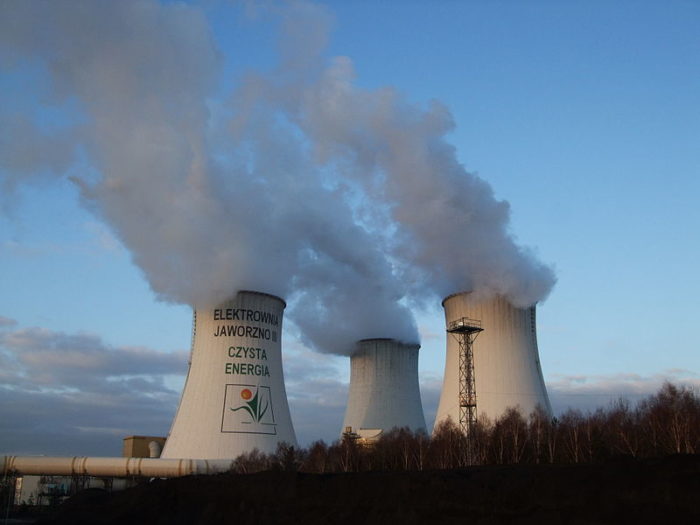Climate Week: Just how are we to keep our cool in a warming world?
It’s hot outside and getting hotter, so what to do about it?
All too typically, we shut ourselves up indoors and crank up the air-con – which may seem a natural response but it’s also one which tosses more petrol on the climate crisis fire.
How to keep our cool in a heating world is a serious question, especially when so much of our refrigeration and air-conditioning runs on F-gases, chemicals significantly contributing to and accelerating climate change.
F-gas refrigerants are extremely damaging greenhouse gases, thousands of times more powerful than carbon dioxide.
And that’s without taking into account the further impacts on the climate of generating the power necessary to run the countless millions of units in the first place, many powered by coal-fired power plants.
But it doesn’t have to be that way – and new cooling technologies are at hand to bring relief from soaring temperatures without adding to the problem.
The cooling conundrum we face is that as climate change heats up our world (the five-year period from 2014-19 is the warmest since record began), we turn ever more to cooling appliances to keep comfortable, further adding to the crisis and pushing global temperatures higher.
So, how do we keep our cool in a warming world?
First, we address the harmful refrigerant gases. Hydrofluorocarbons (HFCs) replaced their ozone-destroying predecessors – chlorofluorocarbons (CFCs) and hydrochlorofluorocarbons (HCFCs) – thanks to the Montreal Protocol, which oversaw the phase-out of CFCs to save the ozone layer and give it time to heal.
But HFCs are super greenhouse gases and among the fastest growing greenhouse gases in use.
Luckily, natural alternatives to F-gases do exist and are increasingly being used worldwide. These natural refrigerants do not heat up the planet or cause damage to the ozone layer and are often more energy efficient too, helping us cut down on the amount of power we need to generate.
As well as pressing for the global phase-down of HFCs, our Climate Campaign also seeks to raise the profile of the energy efficiency of cooling appliances.
Demand for cooling things down is growing at an alarming pace as global temperatures are rising. The International Energy Agency estimates there could be 5.6 billion air-conditioners worldwide by 2050 – that’s triple the number today and amounts to 10 new units sold every second for the next 30 years. And just think of the amount of energy that will be needed to run them …
Air-conditioners and electric fans currently account for about 10 per cent of total electricity demand but by 2050 they could well be the second largest source of global electricity demand. This would be a disaster for electricity grids, air quality and the climate.
So, what’s being done about it now?
The Kigali Amendment to the Montreal Protocol, agreed in 2016, will phase down the use of HFCs by 85 per cent by 2047, avoiding 0.5°C of warming by the end of the century. If coupled with energy efficiency gains, the climate impacts could be significantly enhanced.
In this climate emergency, every bit of warming up that we can avoid matters.
At Monday’s UN Climate Summit in New York, the Cool Coalition announced pledges from 26 countries to adopt national cooling plans, while five countries committed to integrate methods of cooling into their contributions under another international agreement signed in Paris.
The World Bank Group and the Green Climate Fund are integrating clean cooling into their efforts and the Children’s Investment Fund Foundation has pledged an additional $20 million in funding for the Kigali Cooling Efficiency Programme. Furthermore, several countries committed to a France-led pledge for fast action on efficient cooling.
Key end users of refrigeration equipment are also waking up to the reality of the climate impact of cooling and are taking action.
Ahead of Monday’s summit, the Consumer Goods Forum, which represents some of the largest supermarket chains in the world, reaffirmed its commitment to phase down HFCs and implement energy efficient climate-friendly cooling throughout businesses, with transparent action plans for achieving targets. The body called on industry partners to match its ambition and further urged governments to facilitate the roll-out of energy efficient HFC-free cooling systems.
Our colleagues at EIA US have recently produced a welcomed report on efforts made by the country’s leading supermarkets to reduce their impact and come more into line with their UK and EU counterparts on refrigeration.
Cooling is becoming ever more essential to daily human life but it doesn’t have to come at the cost of the climate.
There are clean cooling solutions available now – but we must act quickly to adopt them worldwide.
If we don’t, we risk locking in infrastructure that is unfit for purpose and will only worsen the climate emergency.







